Linux Utilities You Should Know About
dstat & sar
iostat, vmstat, ifstat and much more in one.
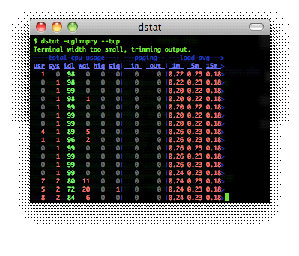
Vmstat, iostat, and ifstat can be replaced by the much more versatile dstat. It increases the number of features and overcomes many of the limitations associated with those other programs. Dstat allows for instant system resource viewing; this includes comparing disk usage with IDE controller interrupts and comparing network bandwidth and disk throughput. Dstat also gives you the most detailed information regarding magnitude and units in an easy-to-read format. All of these features allows you to increase efficiency and reduce confusion and costly errors
vim (& ctags)
The programmers’ editor
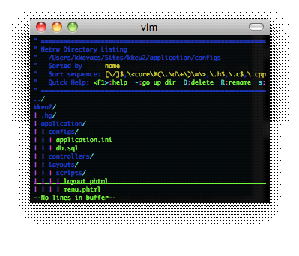
If you are a c or c++ programmer and a vim user, you may know about ctags. Source code are generally distributed to many folders consisting of multiple .cc/.c and .h files, and searching the definition of a function, class, enums, etc. using “/” is inefficient. However, using ctags you can quickly jump to function calls or even function definition source code from another directory. To use ctags, run the command at the destination directory where the source codes are location.
multitail
See your multiple log files

The MultiTail program is designed to monitor multiple log files along the lines of the original tail program. MultiTail started as a copy of wtail, but was attempting to provide a program that could display two log files in a split-screen environment. Where wtail began reading at the start of a file, MultiTail invokes multiple tail processes that only display the last few lines. MultiTail can display in a single window, or it can split a terminal window or Unix system console into two or more sub-windows that can also merge log files and command outputs.
xargs
Executes parallel tasks from input

Before Linux kernel version 2.6.23, long lists of parameters could not be passed to a command. Using xargs, which is a command on Unix and Unix-like operating systems, you can break the list of arguments into sublists which are small enough for the kernel to accept.
lftp
Does FTPS and synch
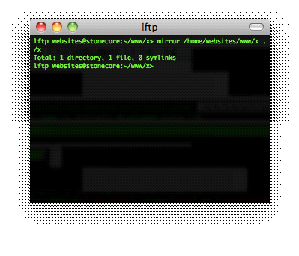
lftp is a type of command-line program for UNIX and UNIX-like systems on your computer. The lftp program was written by Alexander Lukyanov, and is available under the GNU General Public Licence. Besides FTP, lftp is a program that can also support other protocols such as HFTP, HTTP, and HTTPS. These can be active by specifying the desired protocol on the URL. An interesting feature in lftp is support for data transfers in the FXP format. With this feature, it can bypass the client machine making for safer data transfers. The BitTorrent client also has a command that is built-in for torrent data. In addition of the features present in FTP clients, lftp also supports functionality so advanced that file transfers can run smoothly. Even if a file transfer is scheduled at a later date, the bandwidth can change, file transfers can be set up, and Unix shell-like job control can be supported. Instead of having lftp be more interactive, the lftp client can be scripted to make file transfers interesting.
ack
A better grep
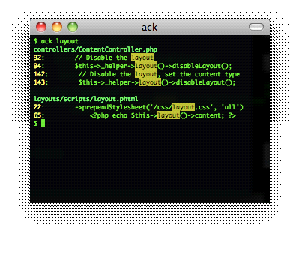
Ack replaces 99% of the uses of grep. Ack searches named input FILEs (or standard input for unnamed files and file names of -) for lines that have a match for the given PATTERN. Ack prints these matching lines by default. Ack can also list the files that would have been searched, allowing you to filter by file-type.
htop
Process, memory monitoring.

Designed for Linux, Htop is a system monitoring process viewer that is interactive and completely replaces the Unix program, ‘top’. When compared side-by-side, it’s easy to see that cursor-controlled Htop is a far more convenient, user-friendly interface for terminating processes. Htop displays a list of running processes that is frequently updated. This allows the user to see what programs are running on his or her computer arranged by the amount of CPU usage of each. Htop provides much more information than ‚’top’ because it gives a complete list of all processes that are running, rather than simply showing a list of the top resource consuming processes. Many times, users choose Htop in situations in which Unix ‘top’ provides too little information regarding system processes. Htop is also easier to read and more meaningful because it utilizes color and provides visual information regarding processor, swap and memory status. Htop is very valuable for finding elusive system problems such as minor memory leaks within applications.
ttyrec
Record and play back terminal sessions.
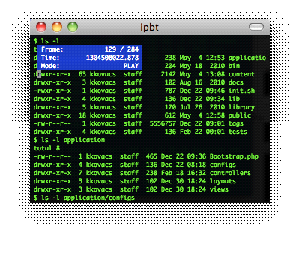
ttyrec is a program that has the capability to record a UNIX terminal session. The ttypec program is not just a script, it has an output file that contains everything from timestamp information to terminal data. This is a method used for a session that can be repeated at a later date. The common use for ttyrec is to record everything from games of NetHack to simple, routine tasks. Playing a file in the ttyrec program is simple and is used to write the data into a terminal file causing less pauses in between. There are features in ttyrec that can make you play a video at double or half speed. You can even fast forward or pause the video. However, going backwards can be difficult since the terminal data from the program can’t go in reverse. However, if you watch a ttyrec program and you pause the program while seeing some interesting information being said, it will be very difficult to remember what was being said.
rsync
Keeps files in sync
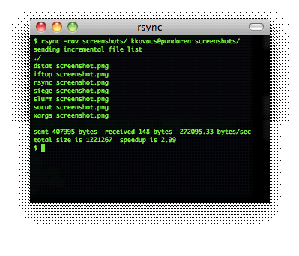
A software application for Unix and Windows systems, rsync is an application capable of synchronizing files and directories from one location to another, while simultaneously minimizing data transfer using delta encoding in appropriate situations. There are a number of programs and protocols similar to rsync; however, they lack one important aspect that makes rsync a far preferable application. When using rsync, mirroring only occurs with a single transmission in each direction. Additionally, rsync is capable of copying files, copying or displaying directory contents, and (if chosen) utilizing recursion and compression. When in daemon mode, rsync listens using the default TCP port of 873. This serves files in the native rsync protocol. It may also utilize a remote (e.g. RSH or SSH). When using RSH or SSH, it is imperative that the rsync client executable be installed on local and remote hosts.
mtr
Advacned traceroute
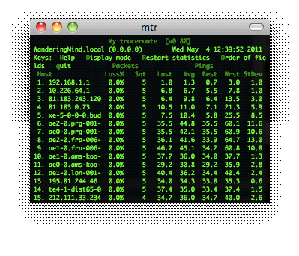
MTR is a command line program that combines ping and traceroute. MTR probes the routers between two points on the internet the same way as a traditional traceroute, but also adds additional diagnostic information. It will update frequently with information on the latency and packet loss to each hop in the router path. This can be useful in narrowing down issues with a specific link or router between two points.
socat
Directing stuff easily in and out of sockets.

Socat is a multi-purpose relay tool that is good for troubleshooting networking issues and making network connections (including TCP, UDP, and SSL). Of particular interest to me is that Socat/G is a patch that allows Socat to use OpenSSL proxy certificates.
siege & tsung
Web load test tools.
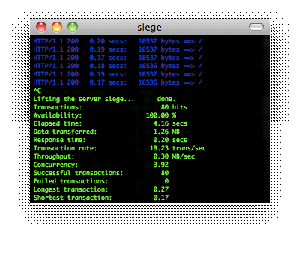
If you want to know how well your Web applications and server can operate under high load, it is a good idea to use a simulated load to test them. We have tested several free software tools that claim to be able to do this. After eliminating the load-testing packages that have been abandoned by their creators, charge for their use, or are unable to complete the installation process for some reason, we are left with five viable options. These are: curl-loader, httperf, Siege, Tsung, and Apache Jmeter.
curl
Everybody’s favorite HTTP tool.
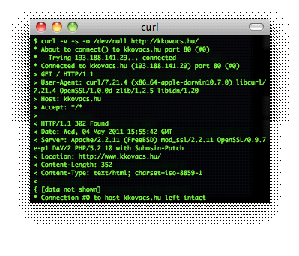
A command line tool based on libcurl. libcurl is a free, portable, client-side URL transfer library that builds and works identically on several platforms (including Solaris, NetBSD, FreeBSD, OpenBSD, Darwin, HPUX, IRIX, AIX, Tru64, Linux, UnixWare, HURD, Windows, Symbian, Amiga, OS/2, BeOS, Mac OS X, Ultrix, QNX, OpenVMS, RISC OS, Novell NetWare, and DOS). libcurl is thread-safe, IPv6 compatible, and fast, with bindings available in over 40 languages. libcurl supports FTP, FTPS, Gopher (protocol), HTTP, HTTPS, SCP, TFTP, TELNET, DICT, FILE, LDAP, LDAPS, IMAP, POP3, SMTP, and RSTP (versions never than 7.20.0 or February 2, 2010). libcurl also supports HTTPS certificates, HTTP POST, HTTP PUT, FTP uploading, kerberos, HTTP form based upload, proxies, cookies, user and password identification, file transfer resume, and http proxy tunneling.
aria2
Command line torrent downloaders.

Aria2 is a utility for downloading files; it supports the protocols HTTP(S), FTP, BitTorrent, and Metalink. It has powerful segmented downloading ability – it can download a file from multiple sources and multiple protocols while maxing maximal use of your download bandwidth. It can download a file from HTTP(S)/FTP and BitTorrent simultaneously while uploading the data from HTTP(S)/FTP to the BitTorrent swarm. aria2 uses Metalink’s chunk checksums to automatically validate chunks of data while downloading a file.
ttytter
A command line Twitter client
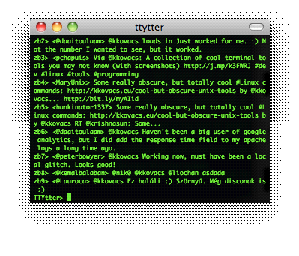
“OMG, another Twitter client? Yes, but this one is different. This is a multi-functional, completely text, Perl command line client. And, they were the first *nix client to support OAuth.
monitor.us is the world’s first free all-in-one hosted server monitoring service, providing both external (measuring application uptime and end-user experience) and internal server (NEW!) resources monitoring (tracking used disk space, RAM, CPU, traffic) as a service. monitor.us is faster and cheaper than even free monitoring software, as there is no need to setup and maintain your monitoring server. monitor.us is a part of the Paid Monitor family of online monitoring tools. Signup monitor.us’ free service here.


Leave a Reply